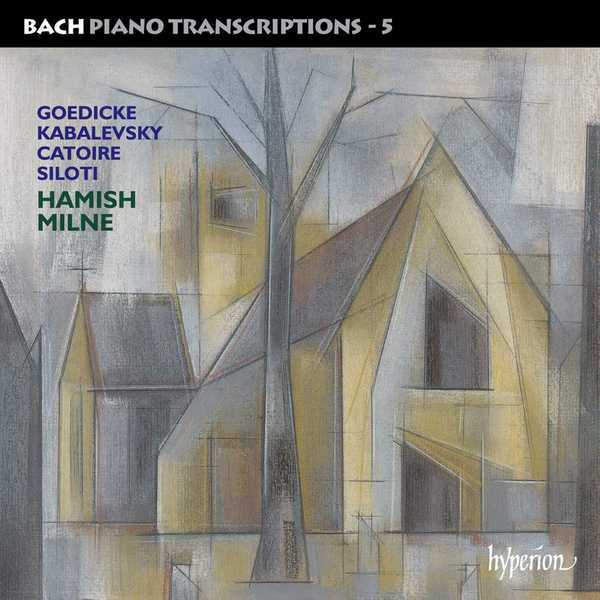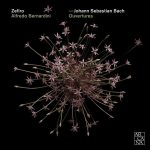
Composer: Johann Sebastian Bach
Performer: Hamish Milne
Format: FLAC (tracks+cue)
Label: Hyperion
Catalogue: CDA67506
Release: 2005
Size: 256 MB
Recovery: +3%
Scan: yes
Prelude & Fugue in G major, BWV541
01. I. Prelude
02. II. Fugue
03. Prelude in B minor (after BWV855a, arr Siloti)
Cantata BWV35 ‘Geist und Seele wird verwirret’
04. Part 1 No 1. Prelude
Prelude & ‘Fiddle’ Fugue in D minor, BWV539
05. I. Prelude
06. II. Fugue
Orchestral Suite No. 3 in D major, BWV1068
07. II. Air ‘on the G string’
Sonata for Violin & Harpsichord No. 5 in F minor, BWV1018
08. III. Adagio
09. Fugue in C minor, BWV575
Sonata for solo violin No. 2 in A minor, BWV1003
10. III. Andante
11. Passacaglia in C minor, BWV582
Flute Sonata No. 2 in E flat major, BWV1031
12. II. Siciliano
Toccata & Fugue in D minor, BWV538 ‘Dorian’
13. I. Toccata
14. II. Fugue
The fifth volume in Hyperions enlightening voyage through the distinguished legacy of piano transcriptions of Bach masterpieces brings us to a fascinating programme of Russian realizations. In his accompanying essay Hamish Milne makes an ardent case for the transcribers art, tracing a history of Bach performance through the ages which gives the lie to the conventional obscurity-before-Mendelssohn theory. A continuous tradition can be followed which sees Bachs legacy constantly being reinvented in the language of the day, and nowhere was this tradition more vigorous than in Russia. This recital is underpinned by monumental transcriptions by Goedicke and Catoire whose pianistic complexities comprehensively interpret those areas of performance practice, notably tempo and rubato, which Bach left to the performers instinct. At once audacious and characterful, these pillars of the genre are offset by delicate transcriptions by Alexander Siloti which serve as a fascinating and fastidious codification of the aristocratic pianism of the day. Concluding Hamish Milnes masterful programme comes Kabalevskys mighty transcription of the Dorian Toccata and Fugue; whatever may be lacking in subtlety, one can hardly deny the thrilling power of the climaxes. Hamish Milnes performances are a revelation. In the monumental grandeur of his playing, contrasted with an exquisite range of colour and glorious singing lines, his playing embodies the tradition of the golden age of pianism from which these transcriptions emerged.



